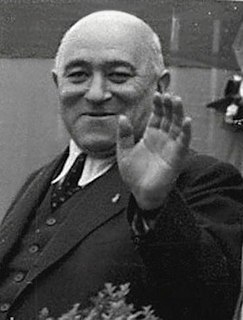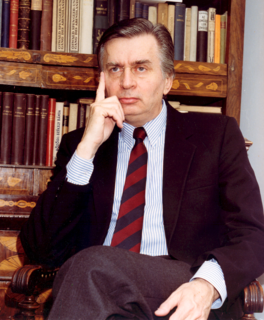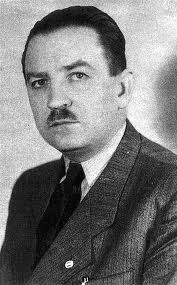| |||||||||||||||||||||||||||||||||||||||||||||||||||||||||||||||||||||||||||||||||||||||||||||||||||||||||||||||||||||||||||||||||
All 411 seats in the National Assembly 206 seats needed for a majority | |||||||||||||||||||||||||||||||||||||||||||||||||||||||||||||||||||||||||||||||||||||||||||||||||||||||||||||||||||||||||||||||||
| Turnout | 96.5% | ||||||||||||||||||||||||||||||||||||||||||||||||||||||||||||||||||||||||||||||||||||||||||||||||||||||||||||||||||||||||||||||||
| |||||||||||||||||||||||||||||||||||||||||||||||||||||||||||||||||||||||||||||||||||||||||||||||||||||||||||||||||||||||||||||||||
| |||||||||||||||||||||||||||||||||||||||||||||||||||||||||||||||||||||||||||||||||||||||||||||||||||||||||||||||||||||||||||||||||
 |
|---|
| This article is part of a series on the politics and government of Hungary |
Executive |
| Foreign relations |
Parliamentary elections, which later became infamously the "blue-ballot" elections, were held in Hungary on 31 August 1947. [1] The Hungarian Communist Party, which had lost the previous election, consolidated its power in the interim using salami tactics. This fact, combined with the weakening of the opposition and a revised electoral law, led to further Communist gains. It was Hungary's last remotely competitive election before 1990.

Hungary is a country in Central Europe. Spanning 93,030 square kilometres (35,920 sq mi) in the Carpathian Basin, it borders Slovakia to the north, Ukraine to the northeast, Austria to the northwest, Romania to the east, Serbia to the south, Croatia to the southwest, and Slovenia to the west. With about 10 million inhabitants, Hungary is a medium-sized member state of the European Union. The official language is Hungarian, which is the most widely spoken Uralic language in the world. Hungary's capital and largest city is Budapest. Other major urban areas include Debrecen, Szeged, Miskolc, Pécs and Győr.
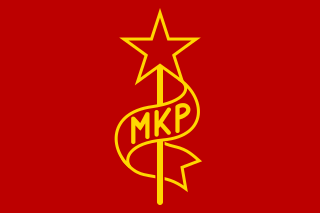
The Party of Communists in Hungary, renamed Hungarian Communist Party in October 1944, was founded on November 24, 1918, and was in power in Hungary briefly from March to August 1919 under Béla Kun and the Hungarian Soviet Republic. The communist government was overthrown by the Romanian Army and driven underground. The party regained power following World War II and held power from 1945 under the leadership of Mátyás Rákosi. In 1948 the party merged with the Social Democrats to become the Hungarian Working People's Party. The Communist Party of Hungary was a member of the Communist International.
Contents
In the summer of 1947, in the presence of Soviet arms, Hungary prepared for a new election. The Communists intended to exploit the situation that arose as a result of the disarray of their main rival, the Independent Smallholders Party, to gain a clear majority in the legislature. [2] Their campaign's central theme was the party's national character; during the coalition years, the Communists had presented themselves as the champion of national interests and as heirs to the nation's tradition. [3] During these preparations, two events clearly indicated the politicisation of economic issues and the economic significance of political decisions. Upon pressure from Moscow, on 10 July the Hungarian government announced its abstention from the conference that was discussing the Marshall Plan for Europe's postwar reconstruction, which, as Joseph Stalin realised, was an attempt of the United States to counter the Soviet military and political dominance of central and southeastern Europe by economic machinations. Slightly earlier, a State Planning Office was created, the three-year plan as urged by the Communists in the previous year was enacted, and on 1 August its implementation began. [2]

The Independent Smallholders, Agrarian Workers and Civic Party, known mostly by its acronym FKgP or its shortened form Independent Smallholders' Party, is a political party in Hungary. Since the 2002 parliamentary elections, the party has won no seats.

The Marshall Plan was an American initiative passed in 1948 to aid Western Europe, in which the United States gave over $12 billion in economic assistance to help rebuild Western European economies after the end of World War II. Replacing the previous Morgenthau Plan, it operated for four years beginning on April 3, 1948. The goals of the United States were to rebuild war-torn regions, remove trade barriers, modernize industry, improve European prosperity, and prevent the spread of Communism. The Marshall Plan required a lessening of interstate barriers, a dropping of many regulations, and encouraged an increase in productivity, as well as the adoption of modern business procedures.

Joseph Vissarionovich Stalin was a Georgian revolutionary and Soviet politician who led the Soviet Union from the mid–1920s until 1953 as General Secretary of the Communist Party of the Soviet Union (1922–1952) and Premier (1941–1953). While initially presiding over a collective leadership as first among equals, he ultimately consolidated enough power to become the country's de facto dictator by the 1930s. A communist ideologically committed to the Leninist interpretation of Marxism, Stalin helped to formalise these ideas as Marxism–Leninism, while his own policies became known as Stalinism.
It was after these further steps away from the Western democracies and towards a Soviet-type system that elections were held. They took place on the basis of a new electoral law (called "Lex Sulyok"), which excluded about 466,000 people (almost a tenth of the electorate) from the vote on grounds of membership in the pre-war fascist party; more parties participated, with only fascist ones still prohibited. In order to further guarantee success, the Communists severely rigged the elections (50,000 fraudulent votes were cast for them [4] [5] ) but nevertheless managed to increase their vote share to a mere 22%, and failed to attain an absolute majority even with the other parties of the Left Wing Bloc. Though the emasculated and demoralised Smallholders only scored 15%, the groups that had seceded from them did well: the Democratic People's Party of István Barankovics came in second (keeping alive a real opposition and showing the strength of popular commitment to pluralism [4] ), and Zoltán Pfeiffer's Independence Party did not lag far behind the Social Democrats. [6]
The Left Bloc was a political alliance in Hungary, functioning between 1946 and 1948. It was founded in Budapest on March 5, 1946. The Bloc included the Hungarian Communist Party (MKP), the Social Democratic Party (SZDP), the National Peasant Party (NPP) and the Trade Union Council (SZT).
However, the Smallholders' left wing thwarted a coalition initiative from the two main opposition parties, and the old coalition remained. The manageable Smallholder Lajos Dinnyés remained as Prime Minister, and dutiful fellow travelers from the other parties were named to the cabinet for the sake of preserving the parliamentary facade. Even this turned out to be completely redundant very soon thereafter, with the gradualist approach abandoned and salami tactics accelerated. The Cominform came into being just days after the new Dinnyés government was formed. In December, Dinnyés himself was replaced by the leader of the Smallholders' left wing, the openly pro-Communist István Dobi. Intimidation, targeting of the increasingly submissive democratic parties (and absorption of the Social Democrats), nationalisation, collectivisation and other measures soon rendered the period 1945–47 a short democratic interlude, and the coalition became a mere memory a year and a half later, with the Communists wielding exclusive power. [7]
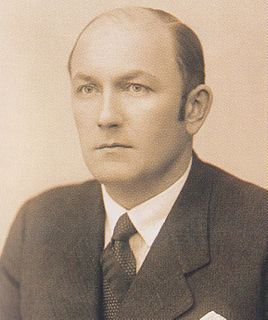
Lajos Dinnyés was a Hungarian politician of the Smallholders Party who served as the last pre-communist Prime Minister of Hungary from 1947 to 1948.

Founded on October 5, 1947, Cominform is the common name for what was officially referred to as the Information Bureau of the Communist and Workers' Parties. It was the first official forum of the International Communist Movement since the dissolution of the Comintern and confirmed the new realities after World War II, including the creation of an Eastern Bloc.

István Dobi was a Hungarian politician who was the Prime Minister of Hungary from 1948 to 1952. He was the first Communist to hold the post, joining the party shortly after it seized full control of the country in 1949.









